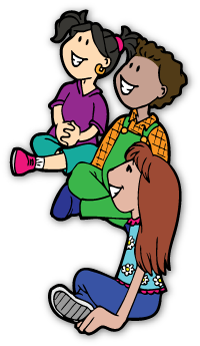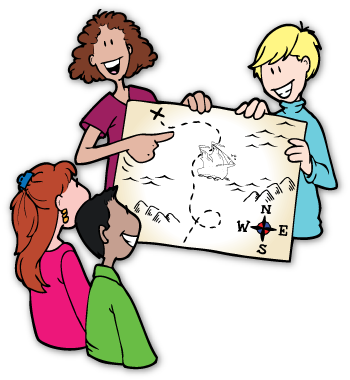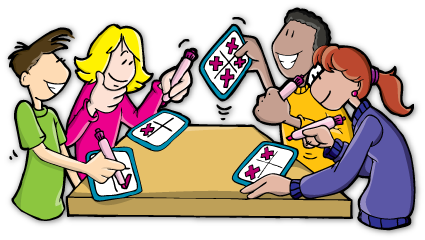Kagan's Articles - FREE Kagan Articles
Research & Rationale
Kagan Structures Empower Teachers, and That Is a Beautiful Thing
Special Article
Kagan Structures Empower Teachers, and That Is a Beautiful Thing
Kris Osthoff
To cite this article: Osthoff, K. Kagan Structures Empower Teachers, and That Is a Beautiful Thing Kagan Online Magazine, Issue #57. San Clemente, CA: Kagan Publishing. www.KaganOnline.com
The following is an interview with Brooke Kelly about what happened when teachers engaged students with Kagan Structures in her school. From 2007-2014, Brooke Kelly was principal at Goose Bay Elementary in Goose Bay, Alaska. This PK-2 school is in the Matanuska-Susitna Borough School District, about 20 miles from Wasilla, Alaska. The population of the school was about 540 students. This Title I school had a high percentage (approximately 55%) of students on free and reduced lunch. Due to needing to be closer to family, Brooke relocated to Cheyenne, Wyoming, in 2014, where she is currently principal at Baggs Elementary, a PK-6 school. All teachers are in their third or second year of implementing Kagan structures..

Kris Osthoff: Why Kagan?
Brooke Kelly:
So why Kagan? It boils down to my belief that the most powerful difference-maker I can put in front of children is a well-trained teacher! Nothing will ever make a larger impact than an awesome teacher. There are so many things that we can't control such as class size, school day length, past school experiences, but I can control (within reason) the caliber of teacher that our students have in front of them. I was looking for strategies or ways teachers could be supported that would cross content areas and help us create the social environment we need in our world.
When I started as principal at the building, our performance in the district on the AIMS Web scores was the lowest. I still remember the feeling in the pit of my stomach when bar graphs were displayed at the meeting.
I had one tiny experience with Kagan early in my career... I think Kagan was a vendor at a Brain Conference I was attending. Anyway, with that little bit of knowledge, a tiny budget, and a staff of untapped potential, off we went! It started with Cooperative Learning Day 1 on a dark and snowy Saturday in our gym at Goose Bay Elementary. Since then, I've been hooked and haven't looked back!!! Kagan balances the art and science of teaching. It's not negotiable that we use structures, but there are many choices teachers are still afforded such as which structure, where, and when.
That Day 1 Cooperative Learning workshop was just the tip of the iceberg for us. Teachers became empowered, and that is a beautiful thing.
Kris Osthoff: So in the next couple years you made sure all of your teachers were Kagan trained by taking the Cooperative Learning Institute as well as some other Kagan workshops, like Win-Win Discipline and Second Language Learning. Talk about what you started to see in classrooms. How could you tell Kagan Structures were having a positive impact on student learning?
Brooke Kelly:
I knew Structures were having a positive impact in several ways. First of all, teacher morale and excitement for our profession skyrocketed right away. There were smiles on faces, excitement in planning, and the camaraderie that comes from a common experience (the professional development) and a common effort. Teachers could have great, supportive conversations and truly support each other. At the time we started using Kagan Structures, there was this feeling across the district that teaching needed to be more of a scripted program, whereas Kagan Structures helped teachers to fall back in love with their profession. It gave teachers a framework for engaging students yet still allowed some flexibility.
In addition, classroom office referrals dropped from 1176 office referrals my first year to 63 in my final year. This gave me more time to be an instructional leader, which helped teachers grow, and the positive cycle went round and round.
Student achievement data—the actual numbers—were another concrete way this was recognized. The actual student learning data took longer for me to see, but we stayed the course and it came around.
In 2014, Monica Goyette, Executive Director of Instruction for Mat-Su Borough District, shared that, "Mrs. Kelly leads one of the most successful elementary schools in our district as is evidenced by the school's student learning data. Her students consistently come in underperforming compared to the district average and leave Goose Bay Elementary School performing above our district cohorts. For example, in the fall of 2011, 67% of the Kindergarten class was proficient in Letter Naming Fluency. This winter, 84% of this cohort was reading on or above grade level in the 2nd grade."
Other educators were knocking on the door wanting to know what we were doing. This excitement spread to other buildings as they were trained in cooperative learning.

Here is what I started to see in classrooms:
Obvious changes were made—groups of 4, ManageMats (or the teacher's version), music being used for cues, etc... You know, those concrete items. Teachers could respond to student needs and support learning. Lessons went quicker which allowed for more teaching!
Other less tangible things I began to see:
Students were happier. They liked doing structures. The way they spoke to each other changed quickly. Eye contact, kind words, celebration of each other, and drastically less "cliqueiness" behavior. Parents began to ask questions such as, "What is a RallyRobin and how can we play it?" :)
Again, I am going to say that I remember teachers' smiles. Education can be hard, exhausting work, and they smiled and loved what they were doing. I can still hear some of their conversations in my head. Chats sounded like, "I tried RallyCoach and struggled with ______. How can we do better?" Teachers would respond with constructive ideas instead of complaining and blaming!!!
Cindy Tardiff, 1st grade teacher at Goose Bay Elementary shared:
"One of the biggest differences that I saw in my classroom was the level of engagement. The way the structures are organized requires all students to participate, even the students who put a lot of effort into not being involved in anything. It was also a 'fun' way to reinforce and practice skills/concepts that have already been taught.
"As a teacher, I always felt good about having my kiddos doing something purposeful that they were actively engaged in. I also think the continuous PD we had was very beneficial. The structure of the month kept things 'fresh' and allowed us to hear how other people were utilizing a structure."
Michelle Peterson, 1st grade teacher at Goose Bay Elementary shared:
"Kagan has made a HUGE difference for me as a teacher. The structures are a part of my planning every week, and I enjoy sitting down and seeing which ones I can use at what parts of my day. I wouldn't be the teacher I am today without Kagan! I love teaching new structures and revisiting them in different subjects with different content. Once the students know the structures, the classroom flows very well. My students look forward to doing the structures and know they will always have equal opportunities to share which is important to a six-year-old! My students are better learners because of Kagan, and I will forever be a better teacher because of all I have (and continue to) learned."
Kris Osthoff: What did you do to support your teachers?
Brooke Kelly:
The short answer to that is that I did my best to remove barriers or excuses. I looked for quick wins and highlighted them—publicly, privately—in writing, verbally, any way I could. When you look for the positives, you find them and the momentum (of the successes) caught!
We had a school climate where it was okay to take risks as an educator. It was fine to crash and burn, and you had help getting back up from your colleagues (and I hope they would say from me, too)! "So you tried Inside-Outside Circle, and it was a wreck. That's okay. At least you took the risk, and let's figure out what could go better next time."
I bought some of the Kagan "stuff." As educators, we (including me) love the teacher stuff (Kagan materials). We had a Kagan section in our library of the different books.
We also had the obvious things such as a SAM club (Structure-A-Month club), coaches from Kagan, more training, etc. With the common language, teachers were able to support one another in grade level meetings, too. We scheduled times to talk about Kagan in staff meetings, as well.
I hope that my excitement for our profession and how Kagan relates to it was supportive.
In response to how supported she felt, second grade teacher Mellissa Mayse shared:
"You made sure everyone had an opportunity to attend at least the four-day Kagan training, which gave us the common ground to build upon for the SAM club as well as when we were adding Kagan Structures to our planning documents. You also bought tons of Kagan resources for us and made them easily accessible to the staff. During staff meetings, you included the use of Kagan Structures. Not only did it give us a chance to experience a structure 'live,' but it also showed us that you valued Kagan, and it wasn't just another thing being pushed on us."
In response to how supported she felt, Michelle Peterson, 1st grade teacher at Goose Bay Elementary shared:
"You could say you did an amazing job supporting us that set us all up for a Kagan foundation for the rest of our lives. ?"
